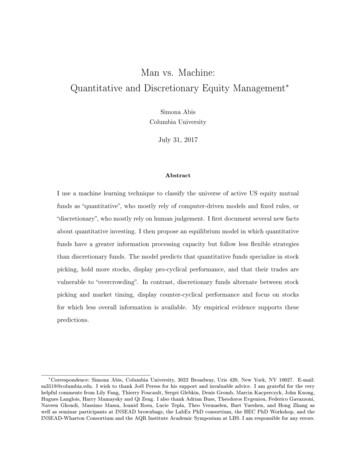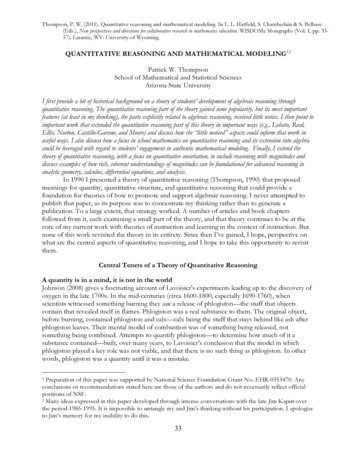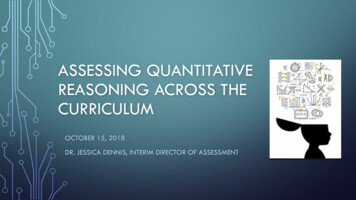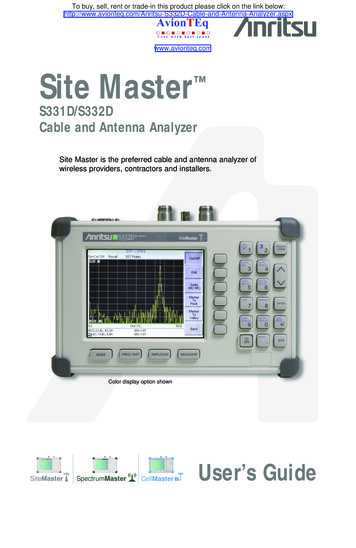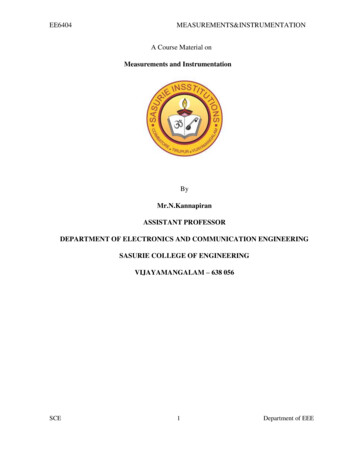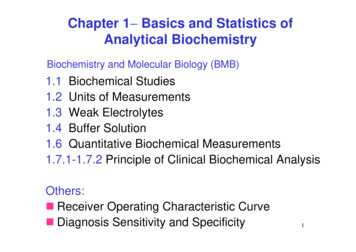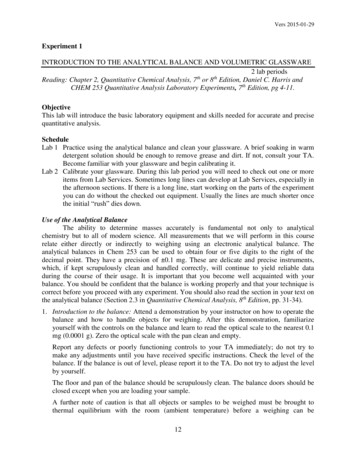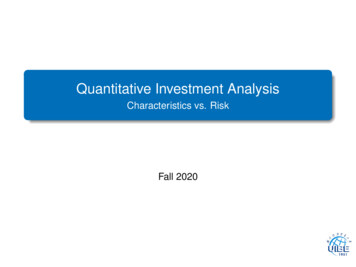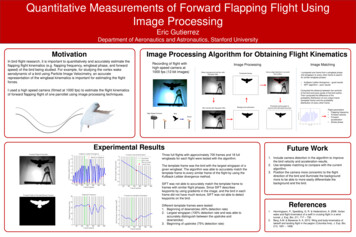
Transcription
Quantitative Measurements of Forward Flapping Flight UsingImage ProcessingEric GutierrezDepartment of Aeronautics and Astronautics, Stanford UniversityMotivationImage Processing Algorithm for Obtaining Flight KinematicsIn bird flight research, it is important to quantitatively and accurately estimate theflapping flight kinematics (e.g. flapping frequency, wingbeat phase, and forwardspeed) of the bird being studied. For example, for studying the vortex wakeaerodynamic of a bird using Particle Image Velocimetry, an accuraterepresentation of the wingbeat kinematics is important for estimating the flightforces.Recording of flight withhigh-speed camera at1000 fps (12-bit images)Image ProcessingObtain background and blur withGaussian filterThreshold framesImage MatchingCanny edge detection to smoothbird outlineI compared one frame from a wingbeat phase(full wingspan) to every other frame to searchfor similar wingbeat phases I used a high speed camera (filmed at 1000 fps) to estimate the flight kinematicsof forward flapping flight of one parrotlet using image processing techniques.Kullback-Leibler divergence – good resultsSIFT algorithm – poor resultsComputed the distance between the centroidof the bird and every pixels of the bird outline.Then computed the difference of theprobability distribution of one unique frame(template frame) and the probabilitydistribution of every other frame.Blur frames with Gaussian filterHigh Speed CameraBackground subtractionThreshold frames again toimprove bird silhouette accuracyFlight parameters Flapping frequency Forward velocity Forwardacceleration Stroke phaseBirdPerchExperimental ResultsThree full flights with approximately 700 frames and 18 fullwingbeats for each flight were tested with the algorithm.The template frame was the bird with the largest wingspan of agiven wingbeat. The algorithm was able to accurately match thetemplate frame to every similar frame of the flight by using theKullback-Leibler divergence method.SIFT was not able to accurately match the template frame toframes with similar flight phases. Since SIFT describeskeypoints by using gradients in the image, and the bird in eachframe did not have much texture, SIFT was not able to detectkeypoints on the bird.Different template frames were tested:1. Beginning of downstroke (40% detection rate)2. Largest wingspan (100% detection rate and was able toaccurately distinguish between the upstroke anddownstroke)3. Beginning of upstroke (75% detection rate)Future Work1. Include camera distortion in the algorithm to improvethe bird velocity and acceleration results.2. Use template matching to compare with the currentalgorithm.3. Position the camera more concentric to the flightdirection of the bird and illuminate the backgroundmore to be able to more easily differentiate thebackground and the bird.References1.2.Henningsson, P., Spedding, G. R. & Hedenstrom, A. 2008. Vortexwake and flight kinematics of a swift in cruising flight in a windtunnel. J. Exp. Bio. 211, 717 – 730.Berg, A.M. & Biewener A. A. 2010. Wing and body kinematics oftakeoff and landing flight in the pegion (Columba livia). J. Exp. Bio.213, 1651 – 1658.
Obtain background and blurwith Gaussian filterBlur frames with Gaussian filterBackground subtractionThreshold frames again to improvebird silhouette accuracyCanny edge detection to smooth bird outlineThreshold frames
Particle Image Velocimetry (PIV)PIVCamerasLaser High SpeedControllerMirrorLaser
Particle Image Velocimetry (PIV)PIVCamerasLaser High SpeedControllerMirrorLaser
Flight of a Flapping Bird in Still Air How does the wake of a flapping bird evolve with time?What is the instantaneous lift of the bird from its wake?Laser sheetzxFlight in still airy
Eric Gutierrez Department of Aeronautics and Astronautics, Stanford University Motivation Image Processing Algorithm for Obtaining Flight Kinematics Experimental Results Future Work In bird flight research, it is important to quantitatively and accurately estimate the flapping flight kinemat
